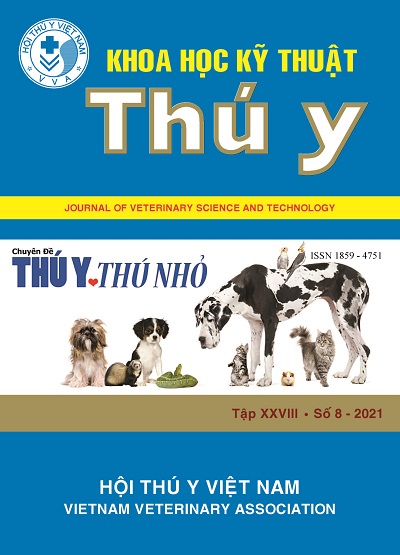Survey on urinary tract stone in cats at Ho Chi Minh City Veterinary clinics
Abstract
Due to the special features of urban lifestyles, the cats are often raised in the captive condition, eating
dry food, with little water supply and limited urination. Because of these factors, urinary system diseases
often occur, including urinary tract pathology. Most cats have a common problem with a urinary tract
stone (usually in the bladder) but it is not received much attention. Many cat owners find it difficult to
recognize the difference that the pathology makes. The disease is not likely to cause death in cats, but
still brings lasting pain and affects the later life of the pets. In this study, 20 cats were found to have stones
in 76 cases of urinary tract diseases (accounting for 26.3%).
These cats’ urine samples were tested and examined under microscopes also, thereby identifying the
crystals and bacteria that were the main causative agents of the disease. In addition, this study analyzed
factors of sex, species, age and biochemical changes of urine. Feline urine was a complex solution in which
salts, such as calcium oxalate and magnesium ammonium phosphate, could remain in solution under
conditions of supersaturation. This urine however had a potential energy for precipitation or tendency to
form crystals from dissolved salts. Most of the cats suffering with urinary tract stones belonged to the age
from 3-6 years old, of which 80% were exotic breed cats, the rate of female cats suffering from urinary tract
stones was higher than the male cats. When examined under microscopes: 45% of urine samples of cats
saffring with urinary tract stones contained oxalate stone crystals and 44% of urine samples of cats saffring
with bacteria infection in the urine tract contained Staphylococcus aureus bacteria

